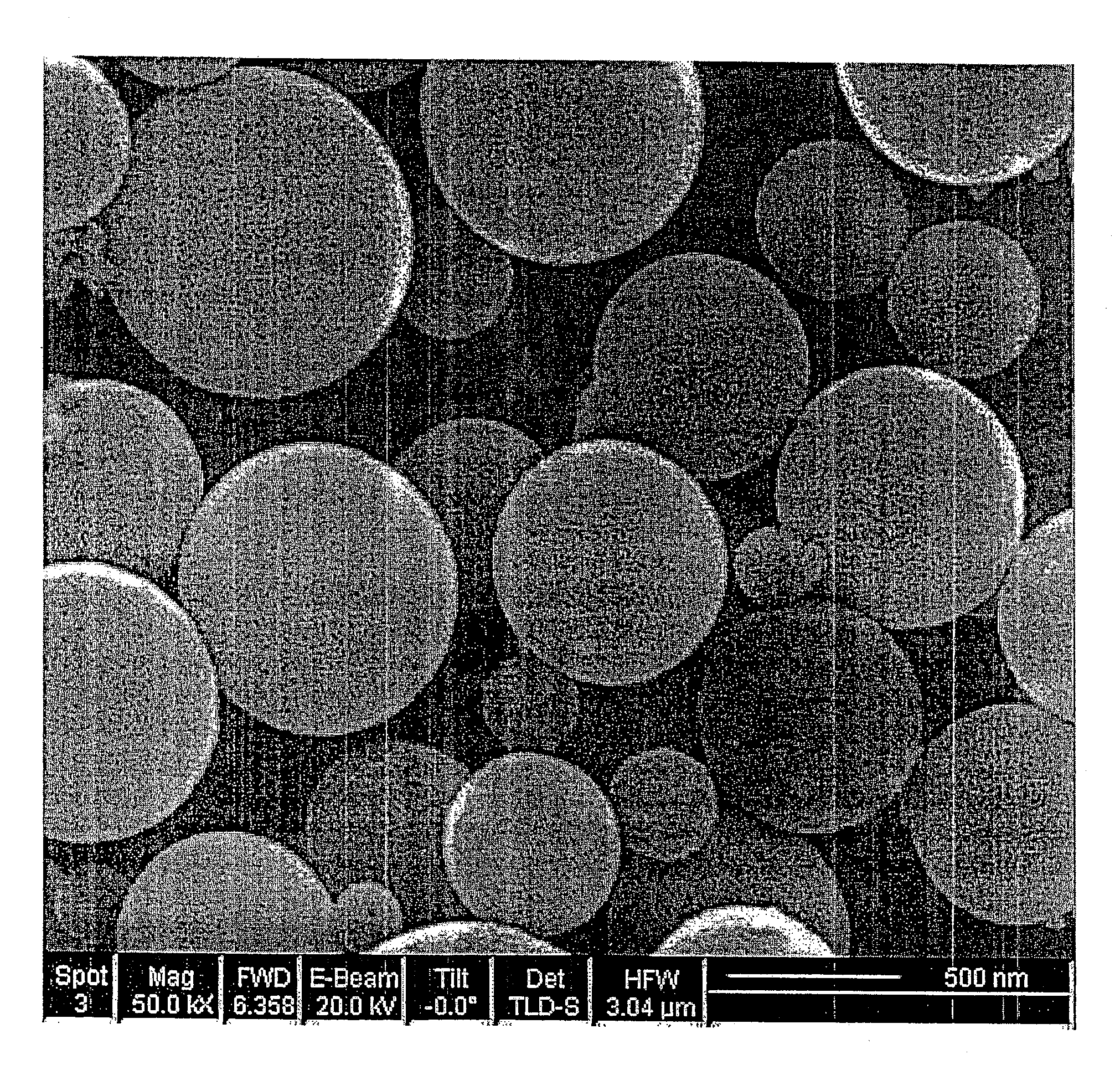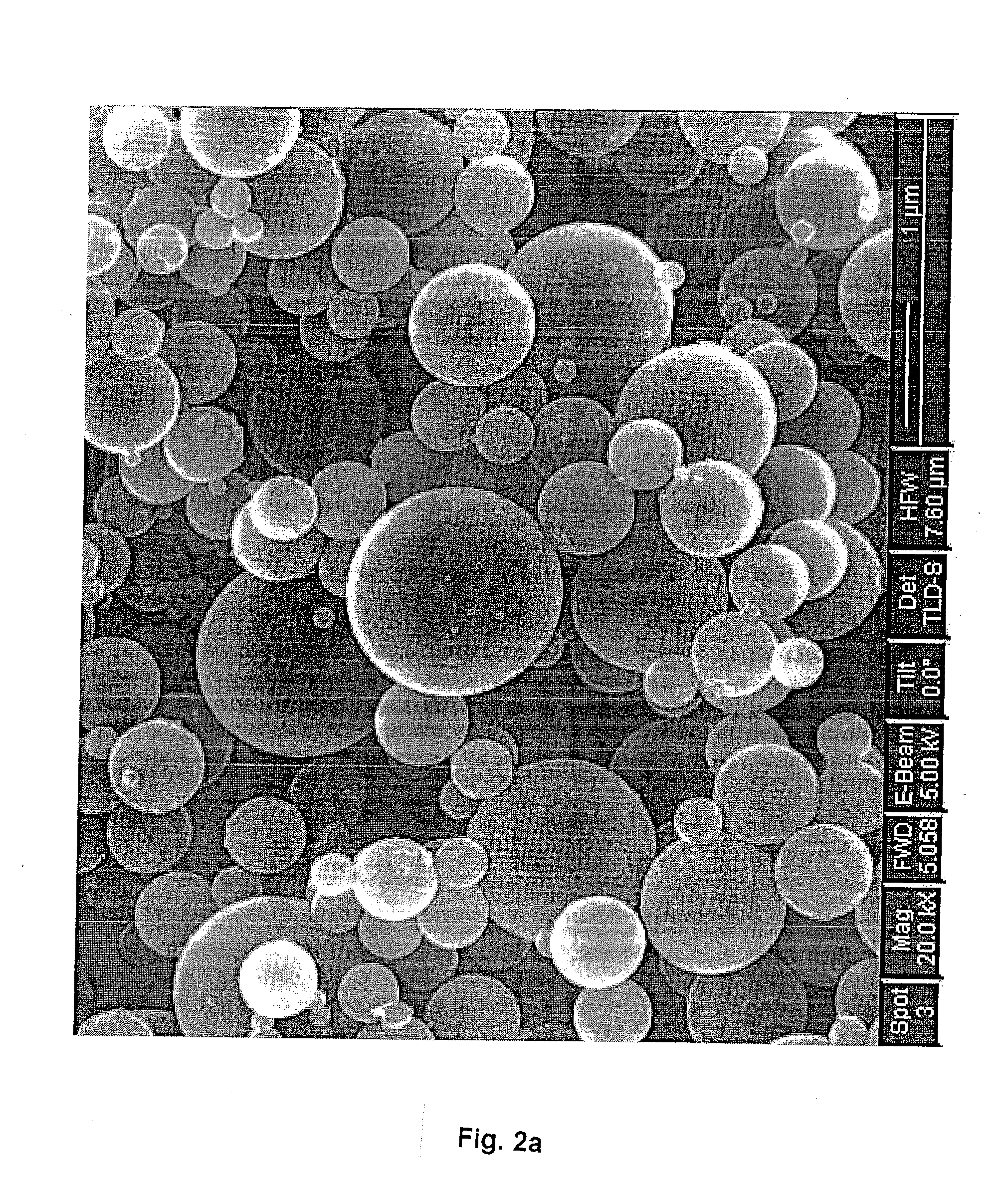Controllable Synthesis of Porous Carbon Spheres, and Electrochemical Applications Thereof
a porous carbon sphere and synthesis technology, applied in the field of porous carbon spherical morphology, can solve the problems of negative effects on other parameters, non-linear function of carbon surface area and porosity, energy crisis and environmental pollution, etc., and achieve the effects of high efficiency, superior orr activity, and high dispersion of metal nanoparticles
- Summary
- Abstract
- Description
- Claims
- Application Information
AI Technical Summary
Benefits of technology
Problems solved by technology
Method used
Image
Examples
example 1
[0059]In this example, porous carbon spheres were synthesized by 22-nm colloidal silica templates, according to the detailed process described above. In this case, sucrose was used as carbon source, with the silica to carbon weight ratio of 2:1.
[0060]FIG. 2a shows the SEM picture of the carbon-silica composite particles synthesized by 22-nm colloidal silica templates. The composite particles have completely spherical shape and smooth surface.
[0061]FIG. 2b shows the SEM picture of the carbon spheres after etching silica. FIG. 2c is a zoomed picture of a single carbon sphere. It is clear that the etching process doesn't destroy the spherical shape of the primary particles. The silica content was etched from the carbon matrix, which resulted in a honeycomb-like carbon sphere with many uniform nanosized pores. The TEM picture of a single carbon sphere (FIG. 2d) shows that the carbon sphere is hollow. The particle size of porous carbon sphere displays a unimodal distribution around 1000 ...
example 2
[0064]In order to improve the stability of such an open frame carbon structure, a graphitic carbon sphere structure was introduced by adding a catalytic graphitization step into the procedure described in example 1. A transition metal ion e.g. Fe, Co, Ni or others in the &qui of a salt (chloride, sulfate, nitrate, acetate etc.) was added into the precursor solution with a metal / carbon source weight ratio from 1:20 to 1:5. The metal or metal oxide nanoparticles derived from the decomposition of the salt acted as a catalyst in step (3) to graphitize the porous carbon sphere. FIG. 6 shows the XRD patterns of porous carbon sphere before and after graphitization. Obvious graphite peaks can be seen in the second sample. Besides the benefit of a more stable structure, the graphitic carbon sphere also has a higher electronic conductivity (10 S / cm) than the pre-graphitized carbon sphere (˜1 S / cm). The electronic conductivity was measured at room temperature by AC impedance spectroscopy over ...
example 3
[0065]One of the examples of applications / uses for the porous carbon according to the invention is mesoporous carbon sphere supported Pt and Pt alloy catalysts prepared by a co-formation procedure, for oxygen reduction reaction, particularly in proton exchange membrane fuel cells. For other applications, other noble metal alloy catalysts can be used e.g. Pt—Ru for methanol oxidation in DMFCs.
[0066]The step of adding the catalyst particles may be done either after the formation of the spherical porous carbon, or it can be done concurrently by co-formation. One process is co-formation procedure; another is conventional impregnation procedure (microwave-assisted polyol method).
[0067]A co-formation procedure, which was based on the above-described procedure, was used to synthesize porous carbon sphere supported Pt and Pt alloy. Pt salt or mixture of Pt and transition metal (Co, Ni, Fe, Mn etc.) salts were dissolved in the reaction precursor, which includes carbon source (sucrose, pyrrol...
PUM
| Property | Measurement | Unit |
|---|---|---|
| Temperature | aaaaa | aaaaa |
| Pore size distribution | aaaaa | aaaaa |
| Pore size distribution | aaaaa | aaaaa |
Abstract
Description
Claims
Application Information
 Login to View More
Login to View More - R&D
- Intellectual Property
- Life Sciences
- Materials
- Tech Scout
- Unparalleled Data Quality
- Higher Quality Content
- 60% Fewer Hallucinations
Browse by: Latest US Patents, China's latest patents, Technical Efficacy Thesaurus, Application Domain, Technology Topic, Popular Technical Reports.
© 2025 PatSnap. All rights reserved.Legal|Privacy policy|Modern Slavery Act Transparency Statement|Sitemap|About US| Contact US: help@patsnap.com



